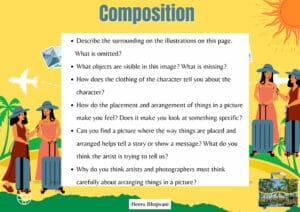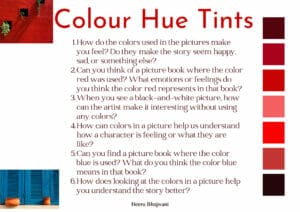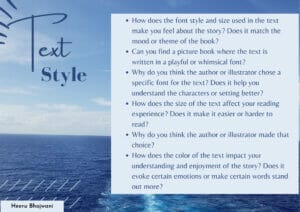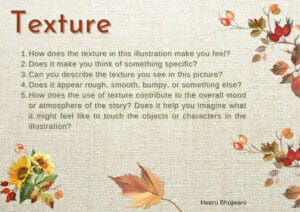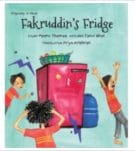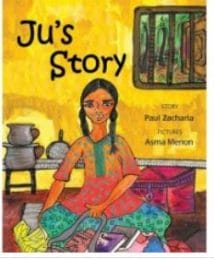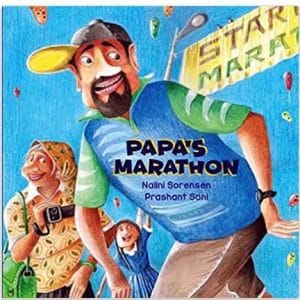Empowering Students to Become Proficient Designers: Unleashing Creativity using picture books
As literacy champions, librarians foster a love for reading through storytelling. Read-aloud sessions have been an integral part of library classes; therefore, using components of visual literacy can take these sessions to new heights, captivating young minds and expanding their understanding of the written word.
Simply put, visual literacy is the ability to interpret, analyse, and create visual images. It encompasses a range of skills: including observing, questioning, and making connections between visual elements. By incorporating visual literacy techniques into read-aloud sessions, librarians can engage children on multiple sensory levels and promote a deeper understanding and appreciation for the stories they encounter. Using these visual literacy strategies can help students become skilled creators of art and images across various media to create posters, presentations, websites, films or any products that involve designing and media.
Visual literacy strategies for Picture Books
Composition and Context
Composition in visual literacy refers to the deliberate arrangement and placement of elements within an image. Through thoughtful composition, artists, and photographers guide the viewer’s attention, convey emotions, and communicate messages effectively.
W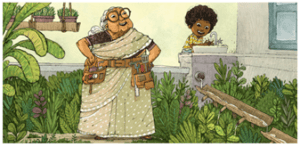 hen reading aloud, librarians can ask questions like :
hen reading aloud, librarians can ask questions like :
- Describe the surrounding on the illustrations on this page. What is omitted?
- What objects are visible in this image? What is missing?
- How does the clothing of the character tell you about the character?
- How do the placement and arrangement of things in a picture make you feel? Does it make you look at something specific?
- Can you find a picture where the way things are placed and arranged helps tell a story or show a message? What do you think the artist is trying to tell us?
- Why do you think artists and photographers must think carefully about arranging things in a picture?
All these aspects form the illustration’s composition to create a meaningful and cohesive visual narrative.
Context also refers to the cultural, historical, social, situational, and personal circumstances to which a text is composed and responded.
Colour, Hue, and Tone
 Artists use colour to design picture book illustrations to evoke specific emotions, convey moods, and enhance storytellin
Artists use colour to design picture book illustrations to evoke specific emotions, convey moods, and enhance storytellin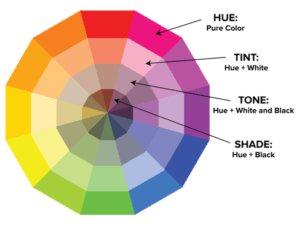 g. Colours have symbolic meanings and can evoke different responses. For instance, red may represent passion, anger, or vitality, while blue can signify peace, harmony, or coldness.
g. Colours have symbolic meanings and can evoke different responses. For instance, red may represent passion, anger, or vitality, while blue can signify peace, harmony, or coldness.
Teaching students to read illustrations through colours, help develop observational skills and analytical thinking as they interpret the emotional impact and symbolic associations of different colour choices.
In black-and-white images, artists often rely on contrast, light, and darkness to create visual interest and convey depth and mood. In black & white images, we can examine the use of contrast, light, and darkness. 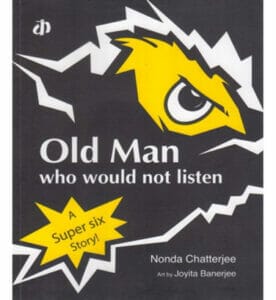
Questions to ask students:
- How do the colors used in the pictures make you feel? Do they make the story seem happy, sad, or something else?
- Can you think of a picture book where the color red was used? What emotions or feelings do you think the color red represents in that book?
- When you see a black-and-white picture, how can the artist make it interesting without using any colors?
- How can colors in a picture help us understand how a character is feeling or what they are like?
- Can you find a picture book where the color blue is used? What do you think the color blue means in that book?
- How does looking at the colors in a picture help you understand the story better?
Text Style
Consider the font, colour, size and placement used in the text. The use of fonts in a picture book plays a crucial role in conveying the book’s tone, mood, and overall visual aesthetic. Different font choices can evoke emotions and help define the characters, set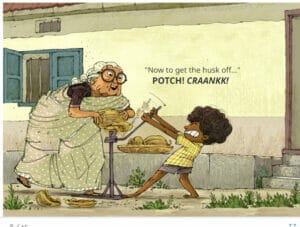 tings, and narrative style. For example, a playful and whimsical story may be complemented by a rounded and playful font, while a mysterious or spooky tale may feature jagged or ornate fonts. The text’s size, spacing, and formatting can impact readability and guide the reader’s eye across the page. The careful selection and placement of fonts contribute to the overall visual storytelling experience and enhance the reader’s engagement with the picture book. Use the image to check out these questions.
tings, and narrative style. For example, a playful and whimsical story may be complemented by a rounded and playful font, while a mysterious or spooky tale may feature jagged or ornate fonts. The text’s size, spacing, and formatting can impact readability and guide the reader’s eye across the page. The careful selection and placement of fonts contribute to the overall visual storytelling experience and enhance the reader’s engagement with the picture book. Use the image to check out these questions.
Questions to try with students are:
- How does the font style and size used in the text make you feel about the story? Does it match the mood or theme of the book?
- Can you find a picture book where the text is written in a playful or whimsical font?
- Why do you think the author or illustrator chose a specific font for the text? Does it help you understand the characters or setting better?
- How does the size of the text affect your reading experience? Does it make it easier or harder to read?
- Why do you think the author or illustrator made that choice?
- How does the color of the text impact your understanding and enjoyment of the story? Does it evoke certain emotions or make certain words stand out more?
 Texture:
Texture:
Texture in illustrations for picture books refers to the visual representation of tactile qualities, creating a sense of touch or surface characteristics. It adds depth, dimension, and richness to the images, enhancing the overall sensory experience for the reader. Using texture, artists can evoke emotions, differentiate elements, and create a more immersive storytelling experience.
Questions to ask children when analyzing picture books related to texture:
- How does the texture in this illustration make you feel? Does it make you think of something specific?
- Can you describe the texture you see in this picture? Does it appear rough, smooth, bumpy, or something else?
- How does the use of texture contribute to the overall mood or atmosphere of the story?
- Does it help you imagine what it might feel like to touch the objects or characters in the illustration?
Visual literacy helps children look at pictures carefully, enhancing their observation skills, understanding visual communication, and fostering creative expression.
Resources to download:

